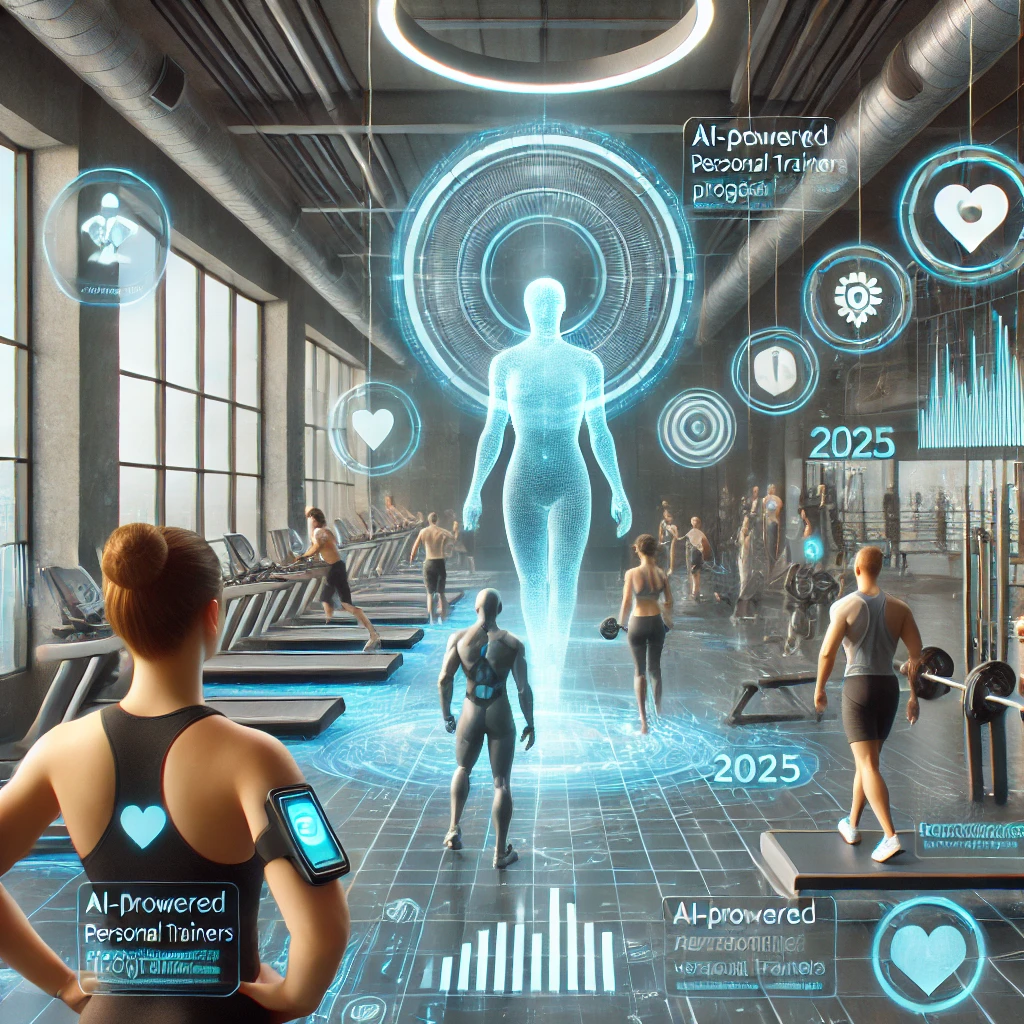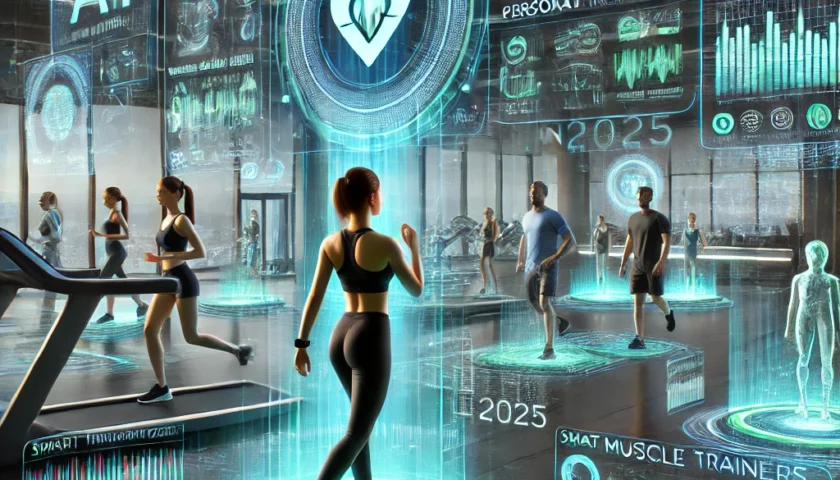The fitness industry is undergoing a transformation, driven by rapid advancements in artificial intelligence (AI). Gone are the days when one-size-fits-all workout plans dominated the market. In 2025, AI-powered fitness programs are revolutionizing personal training, offering users highly customized exercise regimens tailored to their body type, fitness level, goals, and even daily biometric data.
As technology continues to evolve, the integration of AI into fitness is not only making workouts more effective but also ensuring they are engaging, safe, and adaptive. Whether you are a beginner looking to build a solid foundation, an athlete striving for peak performance, or someone aiming for a healthier lifestyle, AI-driven training programs are paving the way for a more personalized, data-driven, and results-oriented fitness journey.
In this article, we will explore how AI is shaping the future of fitness, the key technologies driving this evolution, the benefits and challenges of AI-powered workouts, and what the future holds for this cutting-edge approach to exercise.
The Evolution of AI in Fitness
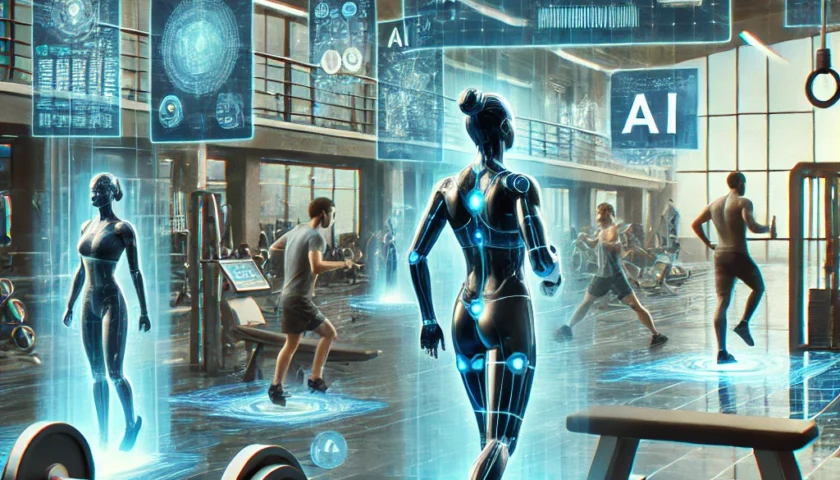
Artificial intelligence in fitness is not a new concept, but its application has significantly evolved over the years. Early AI-driven workout programs primarily consisted of basic algorithmic recommendations that provided general fitness advice. However, with the advancements in machine learning, computer vision, wearable technology, and biometric analysis, modern AI-based training platforms have become highly sophisticated, adaptive, and user-centric.
The Early Stages of AI in Fitness
The journey of AI in fitness began in the early 2010s, with mobile applications that focused on basic activity tracking. These apps could count steps, estimate calories burned, and suggest simple workouts based on user input. However, they lacked real intelligence or the ability to adjust dynamically based on user performance or biometric feedback.
Some of the first fitness apps, such as MyFitnessPal and Runkeeper, introduced data tracking, allowing users to manually enter workouts and food intake. However, they relied heavily on user input rather than real-time data collection, limiting their effectiveness in providing personalized guidance.
During this period, AI in fitness was still in its infancy, primarily limited to predictive analytics based on static data. This meant users could receive workout recommendations based on pre-set algorithms but not receive adjustments in real time.
The Rise of Wearable Technology and Real-Time Data Collection
A major breakthrough came with the introduction of fitness wearables, such as Fitbit, Apple Watch, and Garmin devices. These smart wearables revolutionized AI in fitness by collecting real-time biometric data, including:
- Heart rate monitoring
- Sleep tracking
- Step counting and movement analysis
- VO2 max estimation (a measure of cardiovascular fitness)
- Caloric expenditure and stress levels
With real-time data being gathered, AI systems could analyze a user’s performance continuously, adapting workouts based on factors such as fatigue levels, heart rate variability, and recovery status. This allowed fitness apps to move from simple static recommendations to more dynamic, personalized workout suggestions.
Smart Home Gyms and AI-Powered Virtual Coaching
By the early 2020s, AI was integrated into smart home gym systems, such as Peloton, Tonal, and Mirror. These AI-powered fitness platforms utilized:
- Computer vision technology to track movement and provide real-time form correction
- Virtual coaching systems that adapted training programs based on user progress
- Gamification techniques to keep users engaged and motivated
These systems provided interactive, data-driven workouts, bridging the gap between in-person personal training and digital fitness experiences. AI was now capable of tracking user performance, recognizing trends, and offering adaptive workout modifications.
The Present: AI-Driven Hyper-Personalization in 2025
Today, in 2025, AI-powered fitness programs have reached an unprecedented level of hyper-personalization. Modern AI-driven platforms do not just generate workout recommendations—they function as intelligent fitness companions, continuously adapting to a user’s physiological responses, environmental conditions, and fitness goals.
Some key aspects of AI-driven fitness in 2025 include:
- Real-time adaptation: AI can modify workouts instantly based on biometric data, ensuring exercises remain safe and effective.
- Predictive analytics: AI now predicts injury risks and recovery needs, proactively adjusting workout intensity and duration.
- Personalized coaching: AI-powered trainers simulate human-like coaching experiences, providing motivation, feedback, and accountability.
- Integration with health ecosystems: AI fitness platforms seamlessly integrate with smart healthcare systems, allowing for a holistic approach to fitness and wellness.
These advancements have transformed AI into an essential component of the fitness industry, offering a customized, data-driven, and highly efficient way for people to achieve their fitness goals.
Key Technologies Driving AI-Powered Fitness
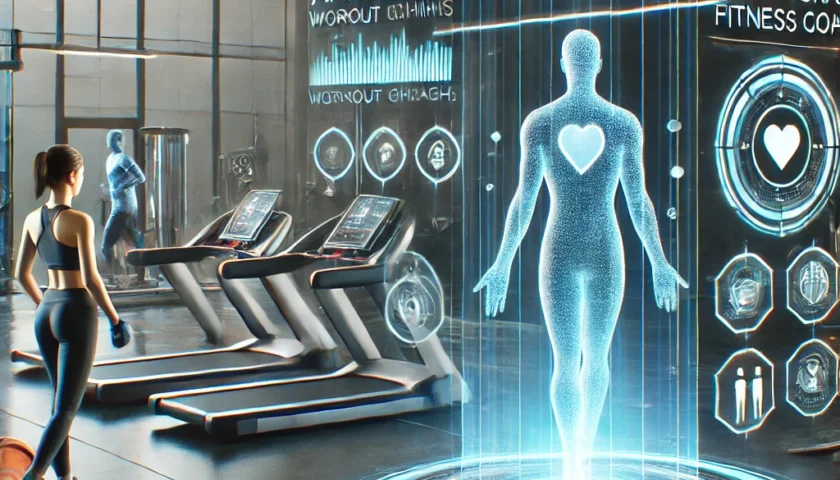
AI-driven fitness programs rely on a combination of cutting-edge technologies that work together to deliver a seamless and highly personalized fitness experience. Some of the most impactful technologies shaping AI in fitness include:
1. Machine Learning Algorithms
Machine learning (ML) powers AI-driven fitness programs by analyzing vast amounts of user data to detect patterns, predict progress, and adjust workout routines accordingly. Unlike static workout plans, ML-powered programs adapt to each individual’s fitness level, ensuring the workouts remain challenging yet achievable. ML models can also identify potential weaknesses or imbalances in a user’s performance and suggest targeted corrective exercises. Over time, these algorithms become smarter and more accurate, allowing AI trainers to provide personalized and highly effective fitness plans.
2. Computer Vision for Form Correction
AI-powered fitness apps use computer vision technology to analyze body movement through smartphone cameras or connected fitness devices. This allows AI to detect posture misalignment, improper lifting techniques, and movement inefficiencies. Some advanced systems can provide real-time verbal or visual feedback, alerting users to form mistakes and preventing potential injuries.
3. Wearable Technology and Biometric Data
Wearable devices track physiological markers like heart rate, sleep quality, and oxygen saturation. AI then interprets this data to determine:
- Optimal workout intensity based on cardiovascular performance
- Ideal recovery times based on heart rate variability (HRV)
- Signs of overtraining and potential burnout
- Nutritional needs based on metabolic rates
4. AI-Powered Chatbots and Virtual Trainers
AI-driven personal trainers function as interactive fitness assistants, responding to voice commands, providing encouragement, and adjusting workouts. They utilize natural language processing (NLP) to interpret user feedback and enhance the coaching experience by offering personalized recommendations based on user progress. AI chatbots have evolved to provide real-time motivation, guidance, and even mental health support by analyzing user engagement levels. These AI-driven trainers can simulate real-world coaching interactions, making fitness training feel more engaging and personal.
5. Predictive Analytics and Injury Prevention
By analyzing movement patterns, AI can predict and prevent injuries before they occur. If AI detects repetitive strain, improper form, or excessive muscle fatigue, it may suggest modifying workout intensity or incorporating active recovery sessions to avoid injury. Advanced AI models now incorporate biomechanics and physiological data to detect risk factors and recommend personalized recovery strategies, making training not just effective but also safer.
6. AI-Enhanced Nutrition and Recovery
AI is also integrated into fitness apps for personalized meal planning and recovery strategies. By analyzing daily energy expenditure, metabolic rate, and muscle recovery status, AI can suggest:
- Macronutrient distribution for optimal muscle growth
- Hydration reminders tailored to activity levels
- Customized supplement recommendations
- Optimal sleep schedules for enhanced performance
Some AI systems now even offer real-time nutritional tracking by analyzing food intake through image recognition, further streamlining diet management for fitness enthusiasts.
The Benefits of AI-Powered Fitness Programs
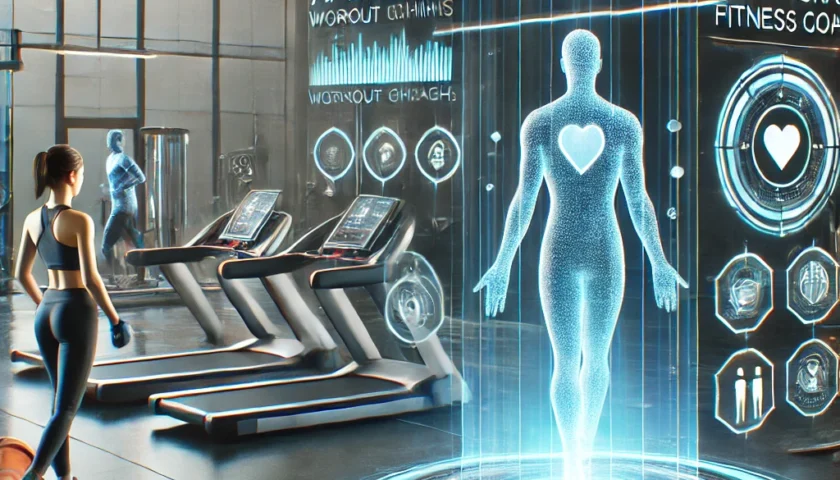
1. Personalized Workouts for Maximum Efficiency
AI eliminates the guesswork in training by creating tailor-made workout plans that adjust based on real-time performance, fatigue levels, and fitness goals. Unlike traditional training programs that follow a one-size-fits-all approach, AI evaluates individual biometric data, movement patterns, and workout history to create highly efficient and personalized plans. Over time, the system learns and evolves, making each session progressively more effective while reducing unnecessary exertion.
2. Real-Time Feedback and Injury Prevention
One of the most significant advantages of AI-powered fitness programs is the ability to provide instant feedback on form and technique. Using computer vision technology, AI analyzes movements and detects improper postures that could lead to injury. If an incorrect motion is detected, AI can offer immediate corrections, ensuring that users maintain proper form. Additionally, AI monitors fatigue levels and stress indicators, adjusting workout intensity to prevent overtraining and injuries.
3. Continuous Adaptation and Optimization
AI-driven fitness programs are dynamic and constantly evolving. Unlike static training routines, AI monitors progress and adjusts workouts in real-time based on performance trends. If a user struggles with endurance, the AI may modify their regimen to include progressive overload techniques or interval-based conditioning. Likewise, if a user excels in certain areas, AI can push limits by increasing resistance, intensity, or workout complexity to maximize progress and avoid stagnation.
4. Increased Motivation and Accountability
Maintaining consistency in fitness is one of the biggest challenges for individuals. AI-powered fitness programs integrate gamification elements, progress tracking, and virtual coaching to keep users engaged. AI-driven platforms provide customized motivational messages, reminders, and milestone achievements to encourage users to stay committed to their fitness journey. Some AI trainers even use psychological reinforcement techniques to keep users motivated, making workouts feel more like an interactive and engaging experience rather than a chore.
5. Accessibility and Affordability
Hiring a personal trainer can be costly, often limiting accessibility for many individuals. AI-powered fitness solutions offer the same level of personalization at a fraction of the cost. With AI trainers available through smartphones, smart mirrors, and fitness wearables, high-quality coaching is now accessible to a broader audience, allowing individuals to receive professional guidance without financial constraints.
Conclusion
AI-powered fitness programs have brought about a groundbreaking transformation in how individuals approach health and exercise. By leveraging machine learning, wearable technology, and real-time biometric analysis, AI has enabled hyper-personalized training experiences that were once only possible with human personal trainers. This technological revolution has made fitness more accessible, efficient, and engaging, opening up new possibilities for people of all fitness levels to achieve their goals with greater precision and fewer risks.
The future of AI-driven fitness is poised to go beyond just workouts. We can expect further integration with healthcare systems, where AI fitness platforms seamlessly connect with medical records, nutrition tracking, and even mental health support systems. This will create a holistic health ecosystem where users receive not just workout recommendations but also insights into their overall well-being, including stress management, recovery strategies, and personalized diet plans.
While AI has already made fitness more data-driven and intelligent, there are still ongoing ethical and privacy concerns regarding the collection and use of biometric data. As AI technology continues to advance, companies and developers must prioritize transparency, data security, and user privacy to ensure that AI-powered fitness remains a force for good.
In the coming years, voice-controlled AI trainers, holographic fitness instructors, and AI-generated workout companions may become standard, further enhancing the interactive and immersive nature of fitness training. The line between human coaching and AI coaching will continue to blur, providing an unprecedented level of support and motivation for users.
Ultimately, AI-powered fitness programs are not just about working out more efficiently—they are about creating a sustainable and healthier lifestyle. Whether you’re a beginner, an experienced athlete, or someone recovering from an injury, AI is set to redefine the fitness experience, making it smarter, safer, and more personalized than ever before. The future of fitness is here, and it is powered by AI.
